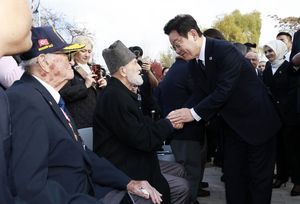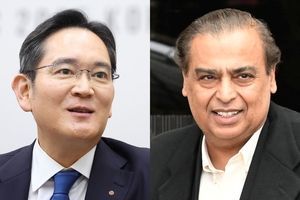 As the National Pension Service moves to help stabilize the weakening won, a new challenge looms: mounting pressure from Washington for greater transparency in Korea’s foreign exchange practices.
As the National Pension Service moves to help stabilize the weakening won, a new challenge looms: mounting pressure from Washington for greater transparency in Korea’s foreign exchange practices.
On Monday, South Korean foreign exchange authorities and the NPS held the first meeting of a new consultative body aimed at addressing the won’s slide against the dollar. Although officials did not disclose specific measures, several options are under consideration, and each carries political and regulatory implications.
One tool available to the NPS is adjusting its foreign exchange hedging strategy. If the pension fund deploys a more active hedge, it could free up as much as 10 percent of its dollar-denominated foreign assets, worth $376.71 billion as of the end of May. This would effectively inject roughly $38 billion into the market and ease downward pressure on the won.
The NPS could also expand its tactical dollar-short position, currently at $11.17 billion, about half of the 5 percent ceiling allowed under its rules.
Another potential lever is the NPS’ access to the Bank of Korea’s foreign currency reserves through their swap line, which helps the pension fund accumulate dollars without directly buying them in the market.
But US scrutiny is tightening.
The US Treasury has repeatedly flagged the NPS’ overseas investments and their impact on Korea’s currency in recent reports. In June, Korea remained on the Treasury’s currency-monitoring list. And in the Treasury’s foreign exchange policy report, the NPS and its swap line with the BOK were explicitly mentioned, an uncommon level of attention for a pension fund.
In an Oct. 1 joint statement on foreign exchange policy, the US Treasury and Korea’s Finance Ministry agreed that “government investment vehicles invest abroad for risk-adjusted return and diversification purposes, and not to target the exchange rate for competitive purposes.”
The phrasing — particularly “competitive purposes” — signals Washington’s sensitivity to any action that could be interpreted as currency influence, analysts say.
“The US Treasury appears concerned about the impact of the NPS and other major institutional investors’ large overseas investments on the won,” said Lee Hyo-seob, senior research fellow at the Korea Capital Market Institute. “There is an underlying layer of subtle pressure.”
Despite the scrutiny, Korean authorities argue that defending the won from sharp depreciation does not amount to currency manipulation and, in fact, aligns with the US administration’s preference for a softer dollar.
“The US recognizes the need for interventions aimed at curbing excessive volatility,” a Finance Ministry official said. “Efforts to prevent a rapid weakening of the won are not viewed as manipulative.”
Reducing dollar demand indirectly, such as by lowering the NPS’ target allocation for overseas assets, is another theoretical option. But doing so would clash with the fund’s mandate to maximize returns amid an aging population.
- Unification minister meets US envoy, stresses bilateral cooperation in resuming US-NK dialogue
- Lee pays tribute at Korean War Memorial in Ankara
- S. Korea asks Lone Star to reimburse legal costs after winning annulment in investor dispute
- Samsung, Reliance chiefs push deeper AI-chip alliance
- [Stars up close] Why Park Jeong-min is going viral as Korea’s most down-to-earth star










Most Commented